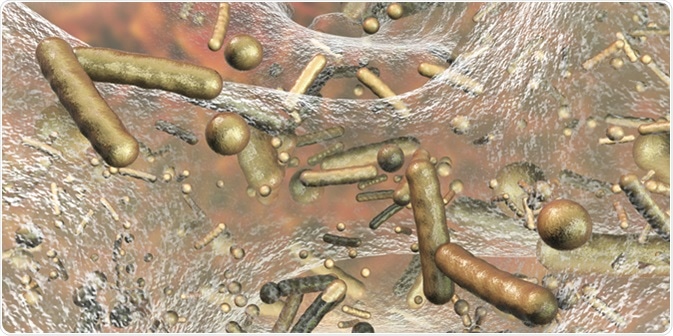Antibiotic Resistance Influence on Wound Care
Antibiotic resistance is one of the factors which causes delay in wound healing and a corresponding spike in medical and healthcare expenses.
The primary reason for the emergence of resistance is the inappropriate use of antimicrobials. To use antibiotics wisely, it is necessary to understand the principles of diagnosing wound infection, what organisms are likely to be responsible, and to what antimicrobial agents they respond.
This knowledge will help to ensure that antibiotics are used only when essential, and in a manner that does not cause more resistance to be generated.

Measures to Prevent Antibiotic Resistance
Prevention of Inappropriate Antibiotic Use
To prevent the emergence of resistance, the following practices are recommended:
- Removing dead and unhealthy tissue from wounds (wound debridement) with copious irrigation to flush out toxins and other agents which prevent speedy healing
- Restriction of systemic antibiotics to situations where spreading infection is manifest in subcutaneous tissue, or is ascending up a limb, or shows signs of severe widespread infection
- Use of more specific antibiotics depending on the type of organism expected in the wound, rather than broad-spectrum antibiotics, to reduce the chances of selecting resistant skin and gut organisms for survival
- Use of empirical antibiotics based on wound cultures
- Use of topical antibiotics
- Testing new antibiotics for the possibility of the development of resistance
- Research on other potential methods to control infection in wounds
The gravity of antibiotic resistance in wound care is well established, and many wound cultures, especially from chronic wounds caused by vascular insufficiency, show multiple bacterial strains which are resistant to common antibacterials.
In such cases, repeated cultures become a vital tool to monitor the emergence of resistant strains in the community. The wound surgeon, the microbiologist, and other specialists in community medicine must collaborate to get early culture results and use them to select the right antimicrobial therapy.
The change in resistance patterns in the community makes the availability of local epidemiologic studies an important factor in choosing the right empirical therapy.
A common misconception which has led to excessive antibiotic use in chronic non-healing ulcers is the attribution of the slow recovery to bacterial infection, whereas it is the disrupted vascular pattern which is to blame. Thus, avoiding the use of antibiotics in this population of patients is likely to create a significant reduction in antibiotic resistance.
Newer and more effective approaches which focus on removal of the biofilm and encouraging physiological conditions in the wound area will reduce the healing time and the need to resort to antibiotics in this segment.
Prevention of Spread of Existing Resistant Strains
However, other steps need to be taken to isolate the resistant strain and prevent its transmission to others, both patients and staff. These include:
- Proper handwashing and hygiene measures after seeing or handling one patient
- Isolation facilities for patients with resistant wound infection
- Barrier nursing to prevent the carriage of infection from one person to another
- Personal protection kits
- The use of equipment set aside for such patients and needs alone
- Careful waste disposal and other means to avoid environmental contamination
These must be exploited in full measure to keep antibiotic-resistant microbes from spreading inside and beyond the hospital.
Topical Antimicrobials in Wound Care
Topical antimicrobials, unlike antibiotics, act at multiple sites to inhibit or destroy target cells, and this means that resistance is rare. Thus the use of topical agents to arrest bacterial growth in wounds is an area of immense potential in wound care, reducing bacterial counts without resorting to antibiotics.
The use of topical antibiotics is another option but this requires sound clinical experience and specific wound criteria. For instance, foul-smelling open wounds may benefit from one topical agent while burns may require another type. At the same time, the adverse effects of topical antimicrobials must also be rigorously assessed, as blood dyscrasias have been reported with some commonly used preparations.
Silver, cationic antimicrobials, and quaternary ammonium compounds are all examples of effective skin antiseptics which are proven to be useful in wound care without the need for antibiotic use.
In short, antibiotics should be used to treat bacterial infection only when indicated by appropriate guidelines, and antiseptics should be given increased priority in wound care. This will create antimicrobial barriers while cutting down the bacterial counts in the wound, and reduce the chances of antibiotic resistance as well.
Sources
- https://www.ncbi.nlm.nih.gov/pubmed/11817964
- http://www.woundsaustralia.com.au/journal/2404_06.pdf
- http://www.idpublications.com/journals/PDFs/JHI/JHI_MostCited_2.pdf
- https://www.ncbi.nlm.nih.gov/pmc/articles/PMC4990431/
- batich.mse.ufl.edu/research/bacterial-resistance-issues-in-wound-care/
- www.woundsource.com/…/multidrug-resistant-organisms-in-wound-management-state-science
Further Reading
- All Antibiotic Resistance Content
- Global travel and antibiotic resistance
- Horizontal Gene Transfer and Antibiotic Resistance
- Surface Localized Antimicrobial Display Applications
- Unapproved Antibiotics and Antibiotic Resistance
Last Updated: Sep 3, 2018

Written by
Dr. Liji Thomas
Dr. Liji Thomas is an OB-GYN, who graduated from the Government Medical College, University of Calicut, Kerala, in 2001. Liji practiced as a full-time consultant in obstetrics/gynecology in a private hospital for a few years following her graduation. She has counseled hundreds of patients facing issues from pregnancy-related problems and infertility, and has been in charge of over 2,000 deliveries, striving always to achieve a normal delivery rather than operative.
Source: Read Full Article
